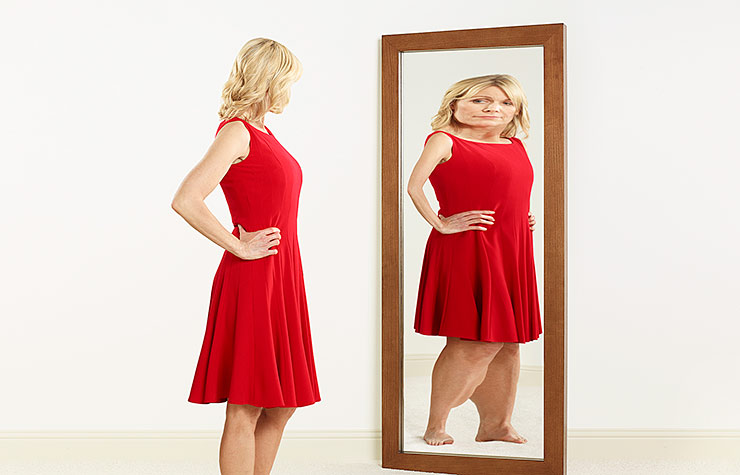Staying Fit


Gayle Hodgins wasn't planning on buying candy, but then she saw the sale sign in the window of her local drugstore.
She stopped in and bought six large boxes of movie-theater candy and a king-size chocolate bar with one thought in mind. She planned to eat every last bite and then force herself to throw up.


AARP Membership— $12 for your first year when you sign up for Automatic Renewal
Get instant access to members-only products and hundreds of discounts, a free second membership, and a subscription to AARP the Magazine.
Hodgins suffers from bulimia nervosa, an eating disorder that compels people to binge on large amounts of food and then purge the calories through vomiting, pills or excessive exercise.
Although most people think of eating disorders as a young person's problem, Hodgins is no teenager. She's a 53-year-old mother of two living in Philadelphia, and she's one of a disturbing number of middle-aged adults suffering from life-threatening eating disorders.
Midlife eating disorders
In June 2012 the prestigious International Journal of Eating Disorders published the results of a seminal study on the prevalence of eating disorders in midlife and beyond.
5 Signs You May Have an Eating Disorder
1. You make yourself vomit because you feel uncomfortably full.
2. You worry that you have lost control over how much you eat.
3. You've lost more than 14 pounds in a three-month period.
4. You believe yourself to be fat when others think you are too thin.
5. Thinking about food dominates your life.
Lead study author Cynthia Bulik, Ph.D., director of the Center of Excellence for Eating Disorders at the University of North Carolina, Chapel Hill, found that 13 percent of American women 50 or older experience symptoms of an eating disorder; 60 percent report that their concerns about weight and shape negatively affect their lives; and 70 percent are trying to lose weight.
Those figures mirror the rates found among teens and young women, says Bulik, author of Midlife Eating Disorders: Your Journey to Recovery.
"Eating disorders affect quality of life, and this has a tremendous impact on society," Bulik says. "It can affect productivity at work, well-being at home, and it can have very serious economic impacts" on families, as many insurance companies are reluctant to pay for care.
Although excessive concerns about weight can appear to be little more than vanity, an eating disorder is a mental illness with close links to depression and anxiety.

































































More on health
Bill Clinton Explains Why He Became a Vegan
Plus check out 6 of his favorite tasty recipes.